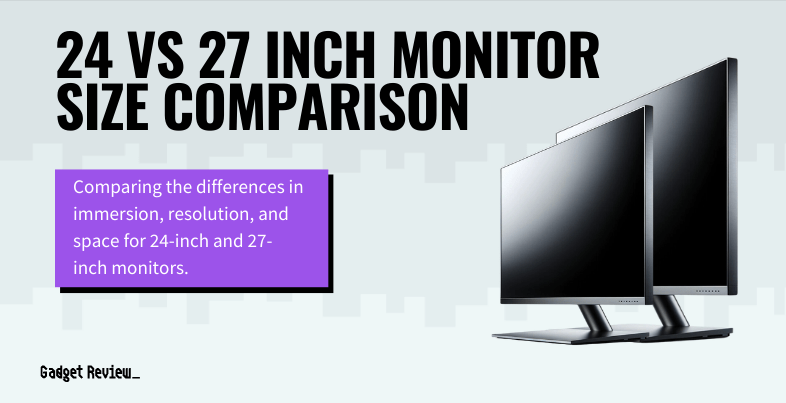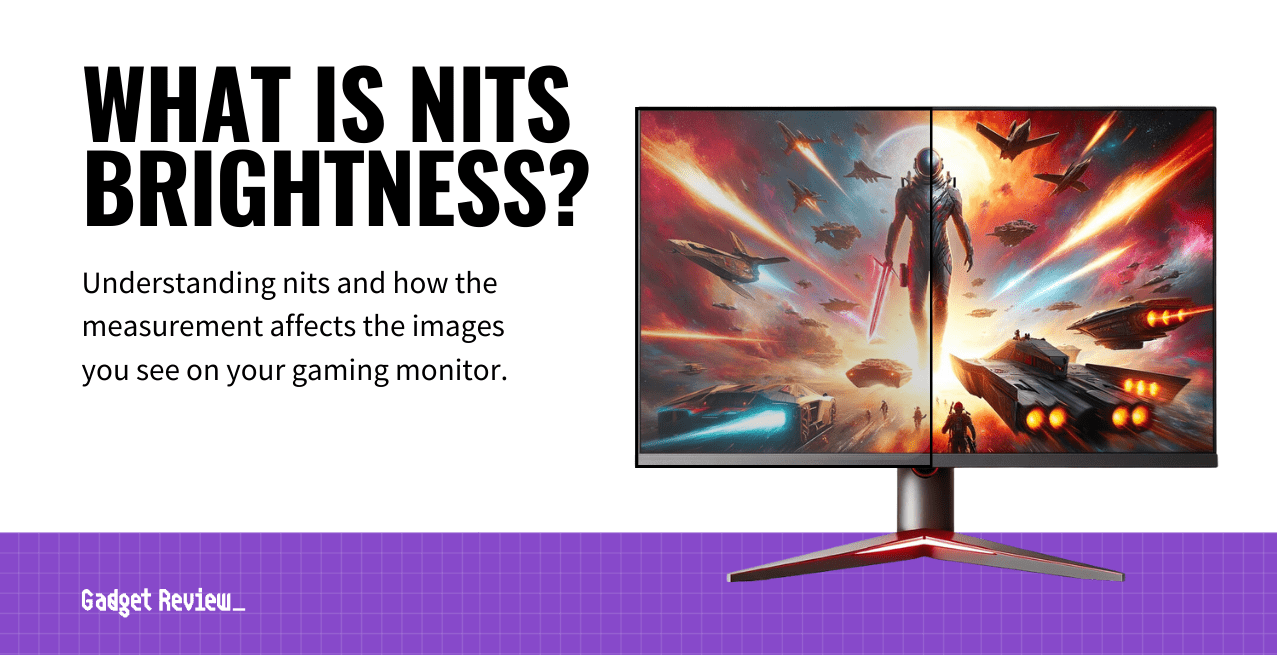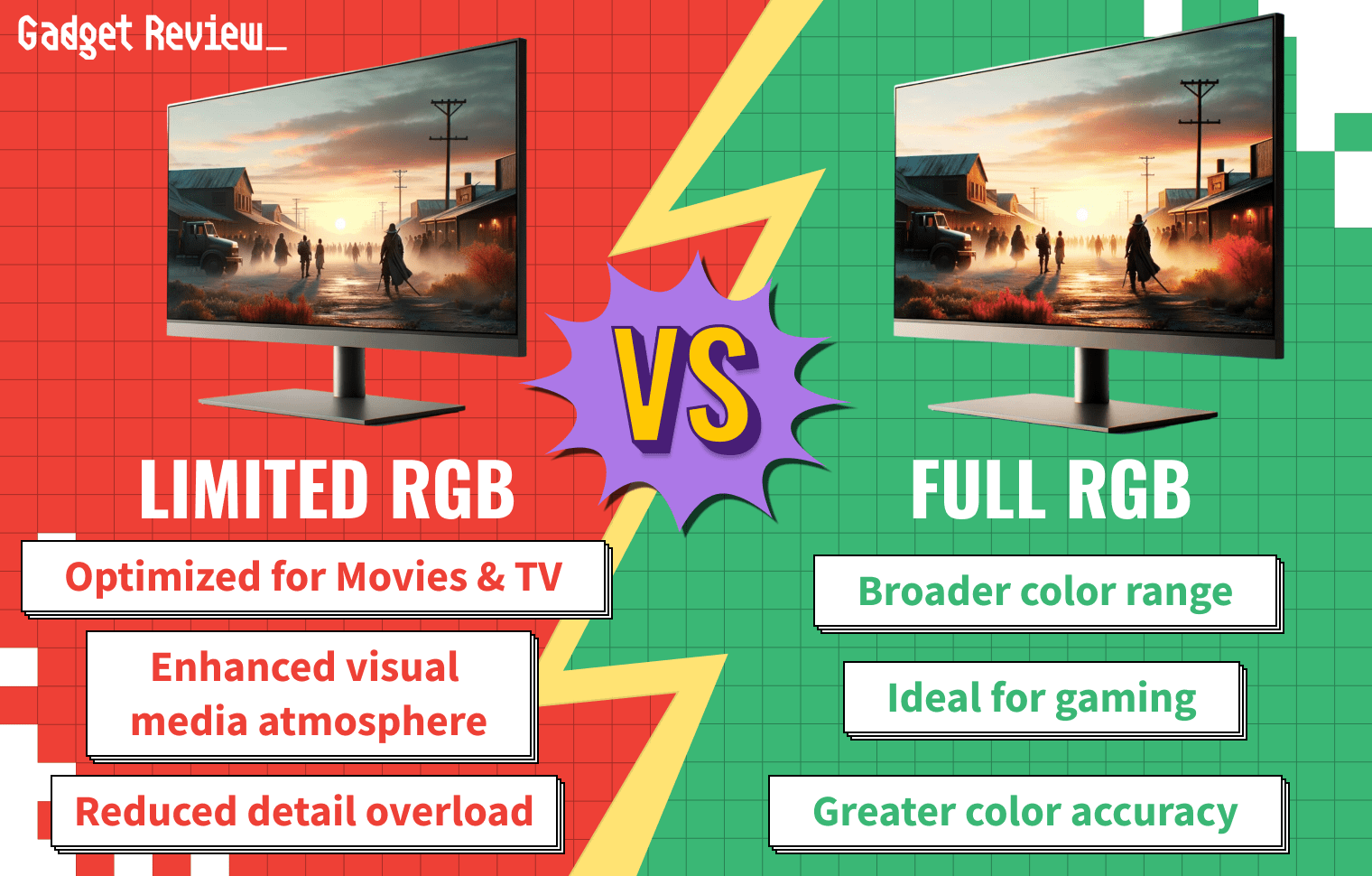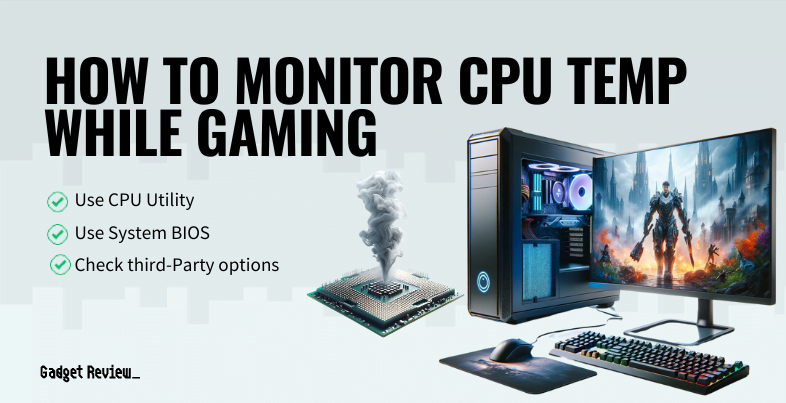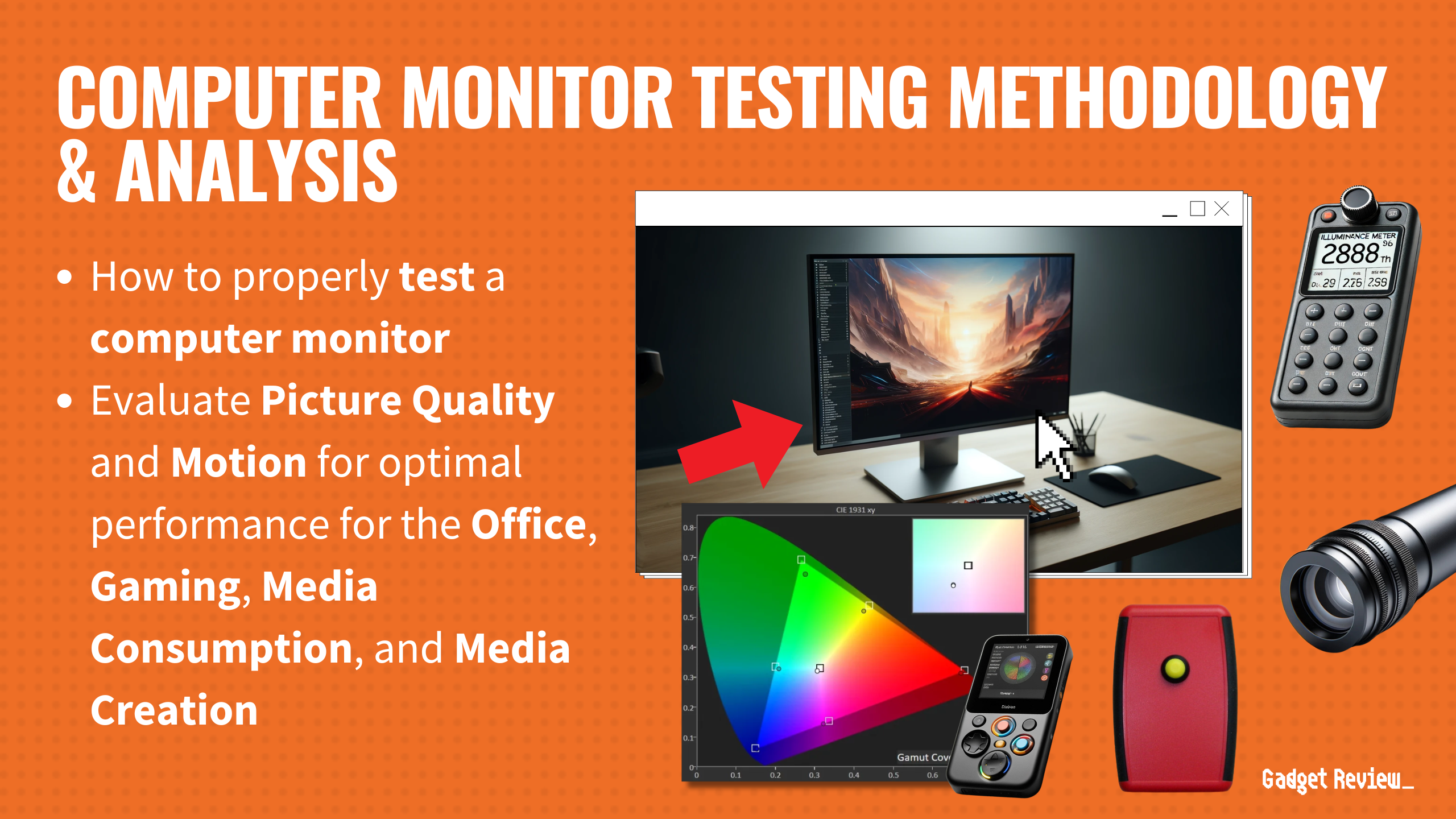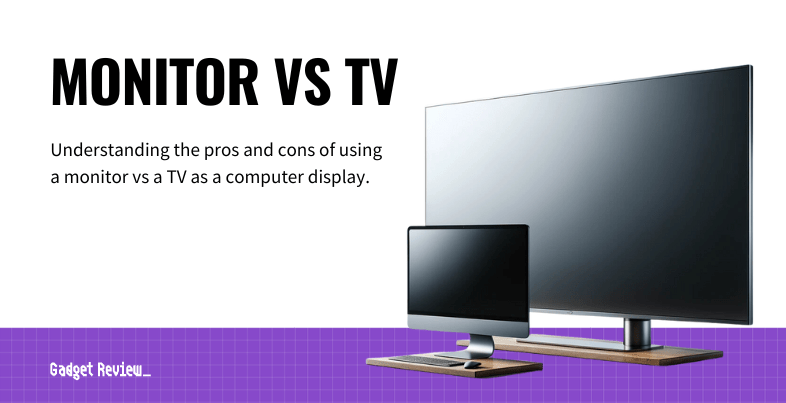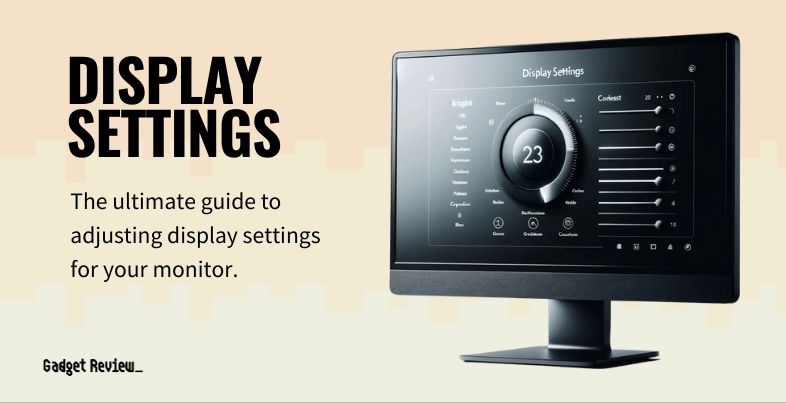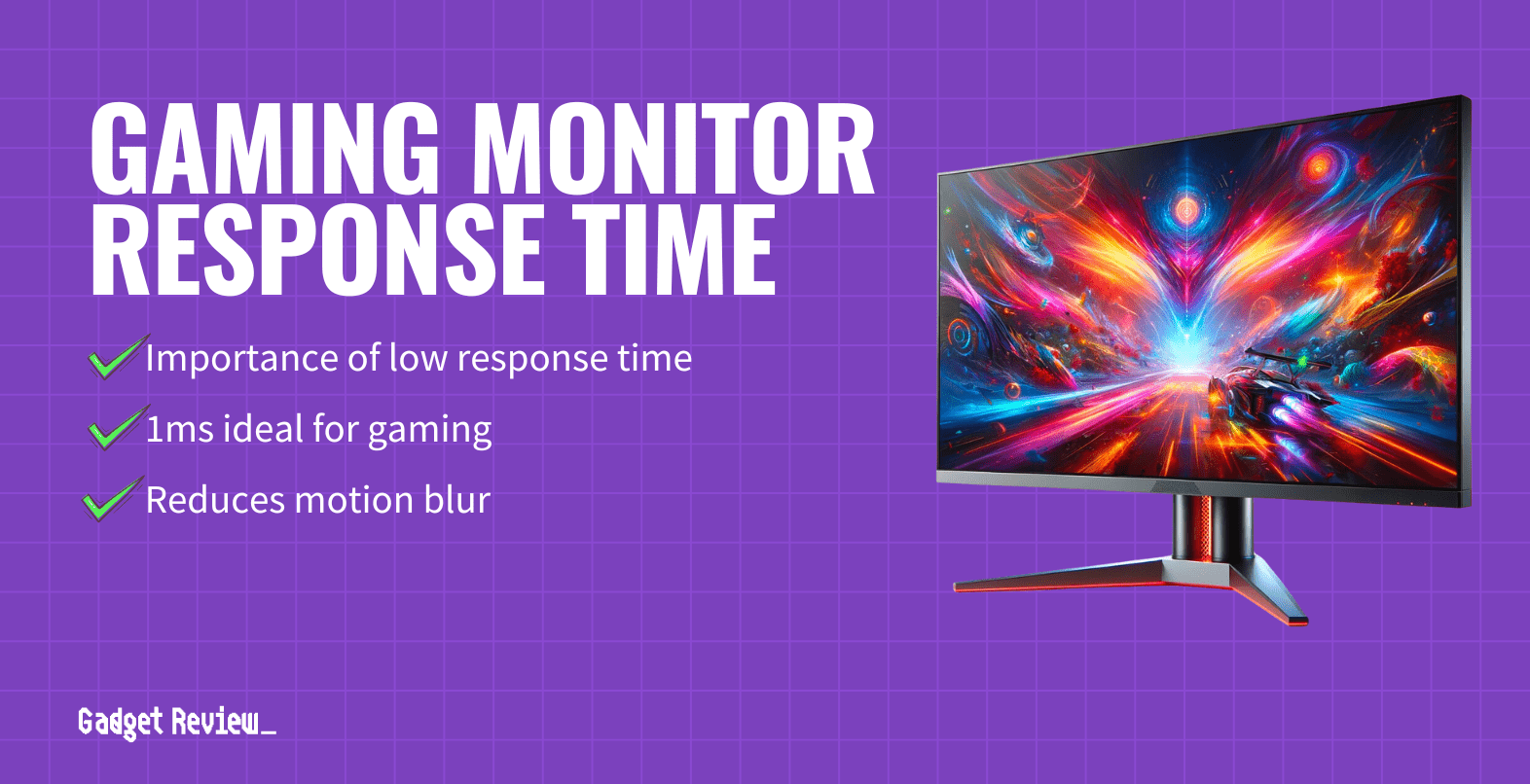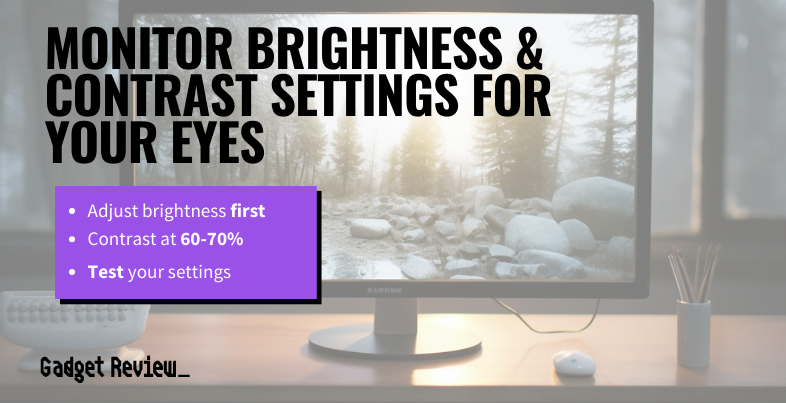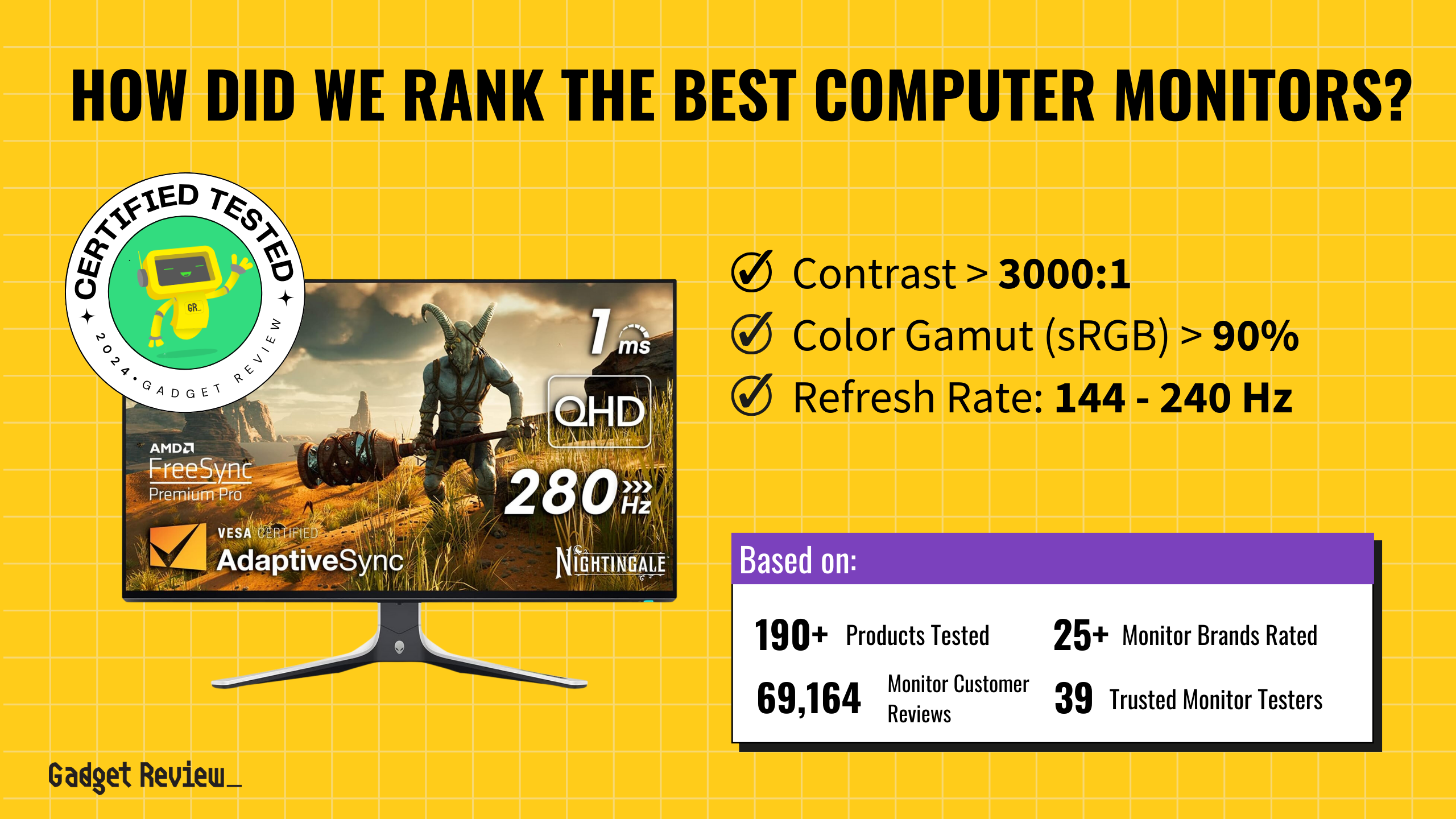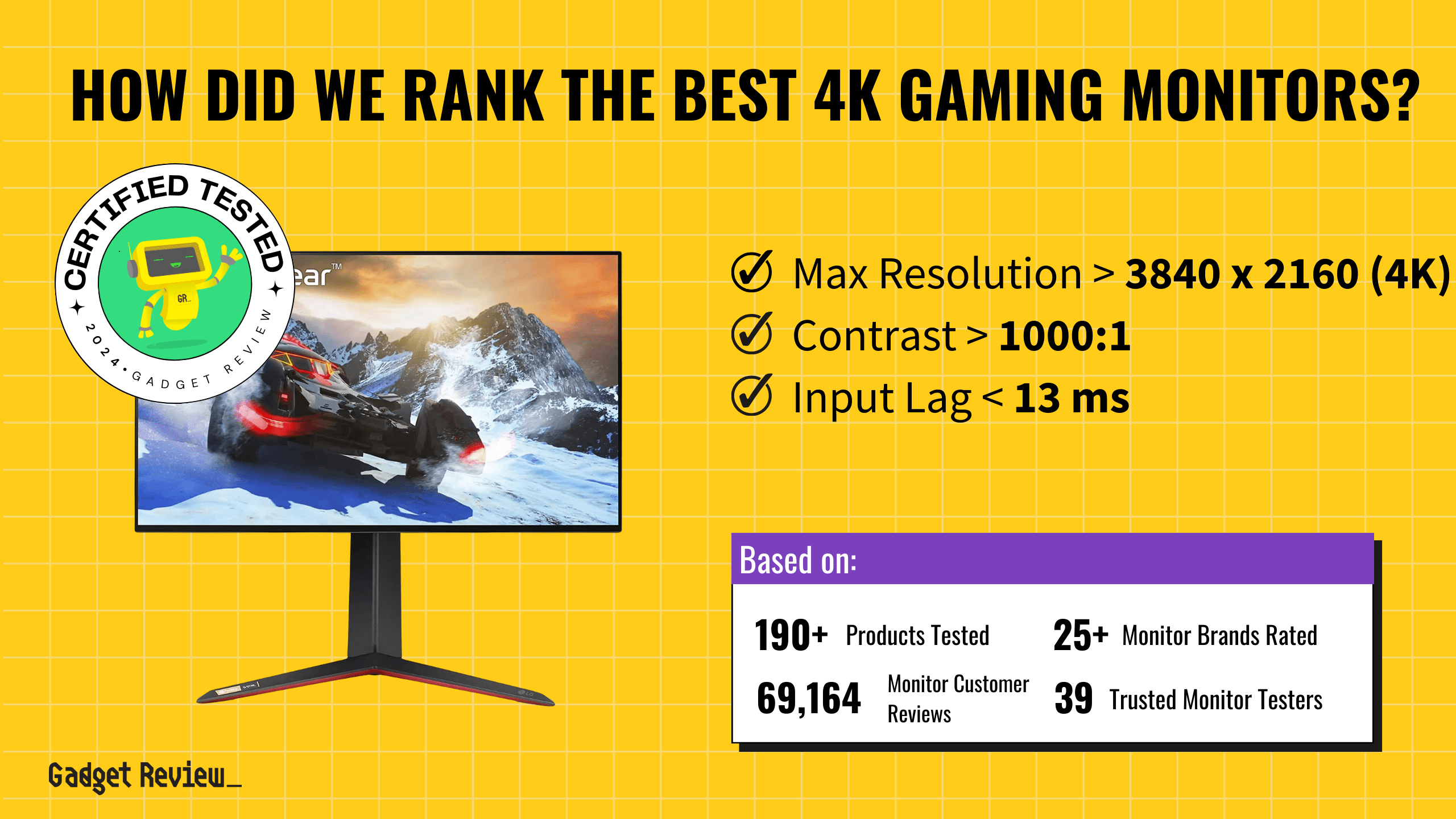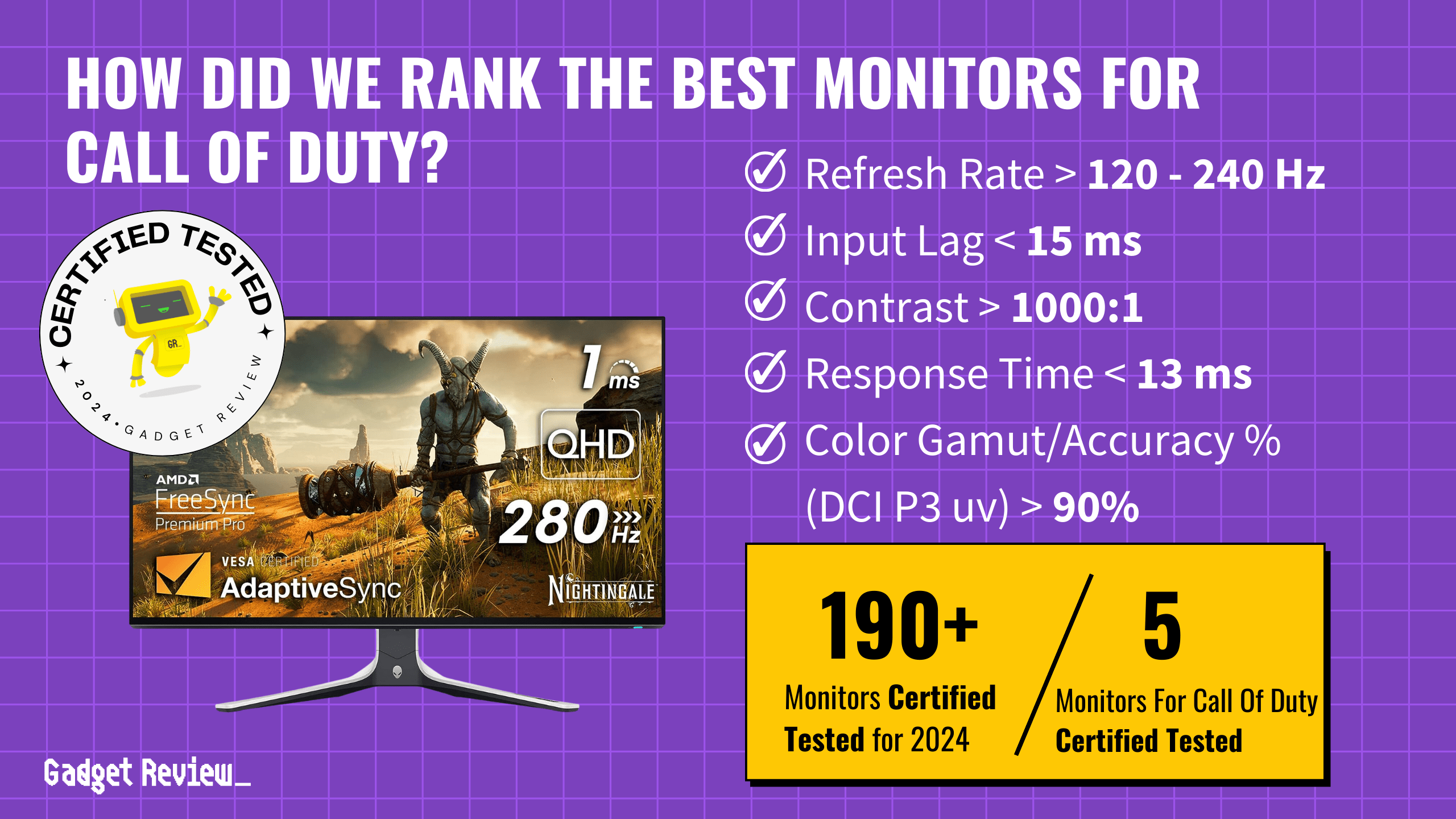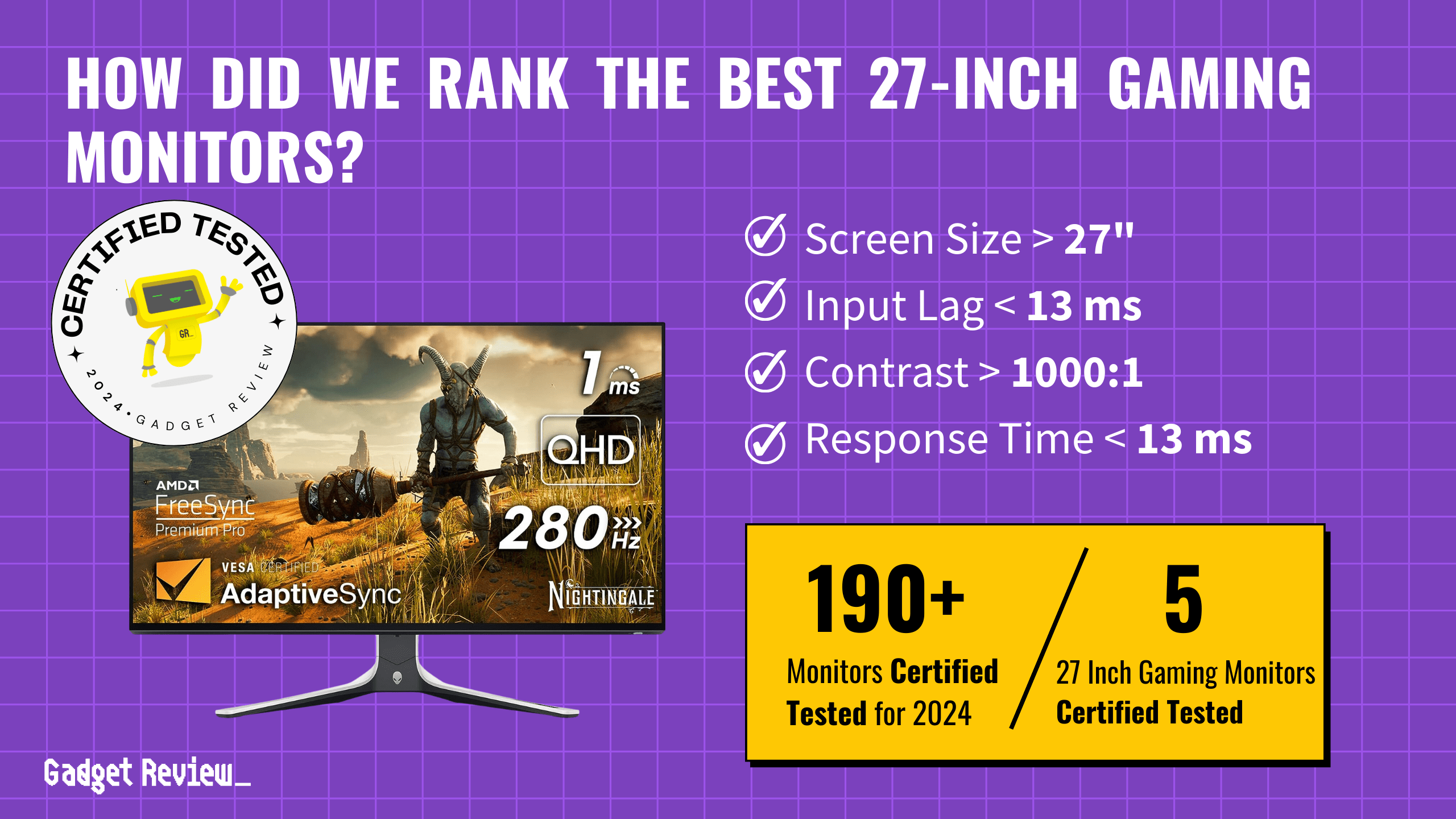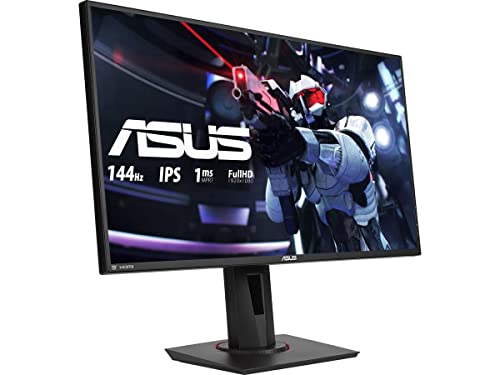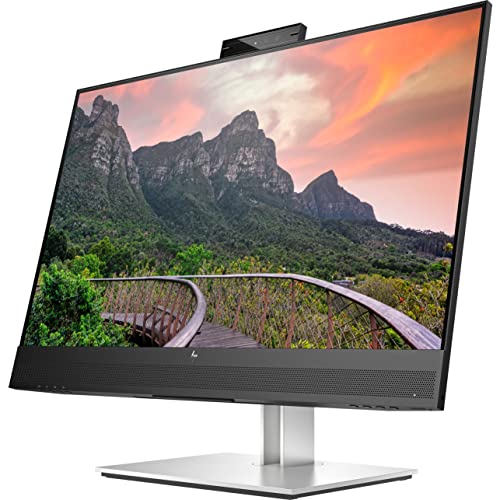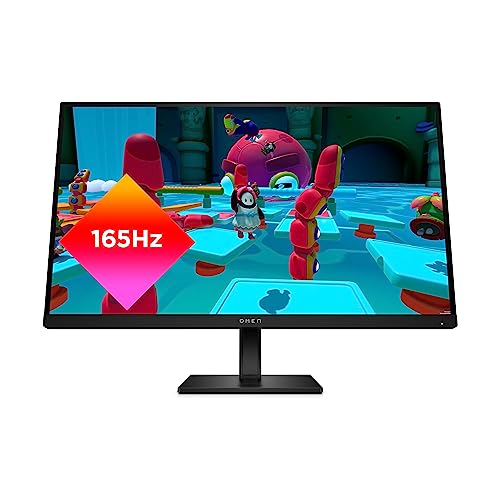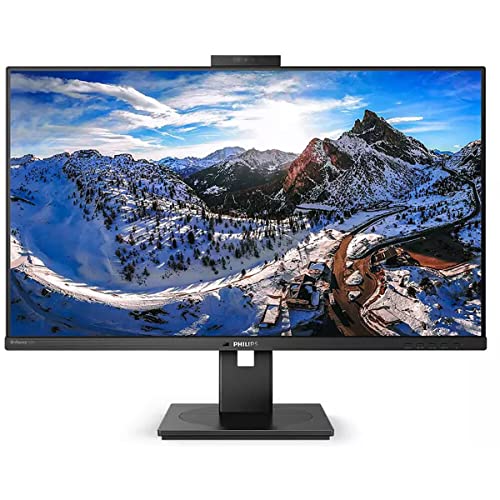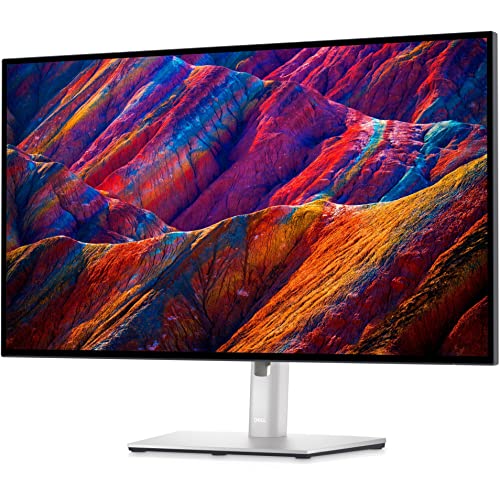If you are looking to buy a new display for gaming or professional use, you may be comparing 24 vs 27-inch monitor sizes. The best computer monitors, after all, come in a wide variety of shapes and sizes. There are key differences in immersion, ideal screen resolution, and more with the two monitor sizes. Keep reading to learn some differences between these two display sizes.
Key Takeaways_
- 27-inch monitors are, obviously, larger, making them a good choice for streaming content, such as TV and movies.
- 24-inch displays are the standard for competitive gaming scenarios, but larger monitors are probably best for most, except when it comes to choosing the finest 24-inch gaming monitor.
- A 27-inch screen will cost slightly more than a 24-inch monitor, though they will take up more room.
Differences Between 24-Inch Monitors and 27-Inch Monitors
The obvious difference here is screen size, and you want the best monitor size for gaming, among other things. The leading 27-inch displays are a good bit larger than a 24-inch monitor.
This disparity in size leads to a number of subtle and not-so-subtle differences, such as when you are comparing a computer monitor vs a TV.
Despite all these differences, what matters is getting the best monitor for gaming and productivity.
Here are some more ways in which 24-inch screens and 27-inch screens differ.
Immersion
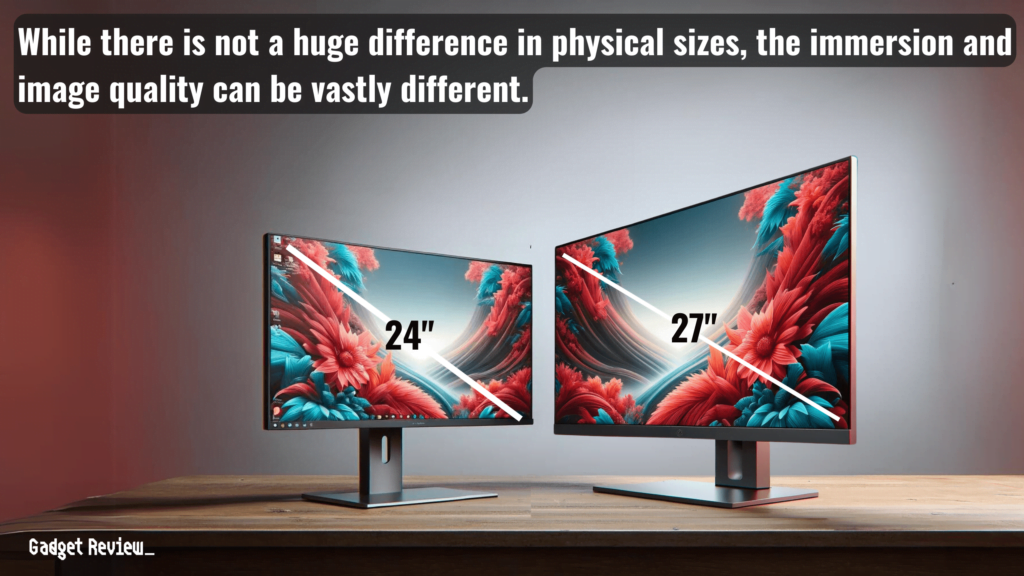
There is no way around it. A larger monitor size translates to increased immersion while playing games, watching streaming content, and conducting professional or creative work.
For those seeking the best monitor for streaming, a 27-inch monitor will often provide a more immersive experience due to its larger screen size.
Additionally, 27-inch monitors tend to offer availability in the ultrawide format, with a 21:9 aspect ratio, whereas 24-inch monitors do not.
Ultrawide monitors are especially known for immersion, as well as curved monitors, like the one you’ll read about in our Samsung C27RG5 240Hz curved gaming monitor review.
If the 24-inch and 27-inch models have the same resolution and screen tech, the larger image on a 27-inch monitor can be easier on the eyes, enhancing the viewing experience. This is crucial in reducing eye strain, especially during long hours of use.
Resolution
Both sizes offer similar resolutions, including 4K panels, but you can make the most of an ultra-high-definition experience better with a larger monitor.
With smaller 4K monitors, text can be difficult to read at times, and you may struggle to find the best sitting distance for a maximum viewing angle.
A 27-inch 1440p monitor strikes a balance between size and resolution, offering crisp picture quality without the need for scaling.
Cost
Larger monitors tend to cost more than smaller monitors, as they demand fewer components. This can come in handy if you are trying to build a budget-friendly gaming room or multimedia room.
insider tip
You can easily find a used 24-inch monitor if you are shopping for bargains.
The difference in cost will not be astronomical, however, as 27-inch displays have been lowering in price throughout the years.
Competitive Gaming
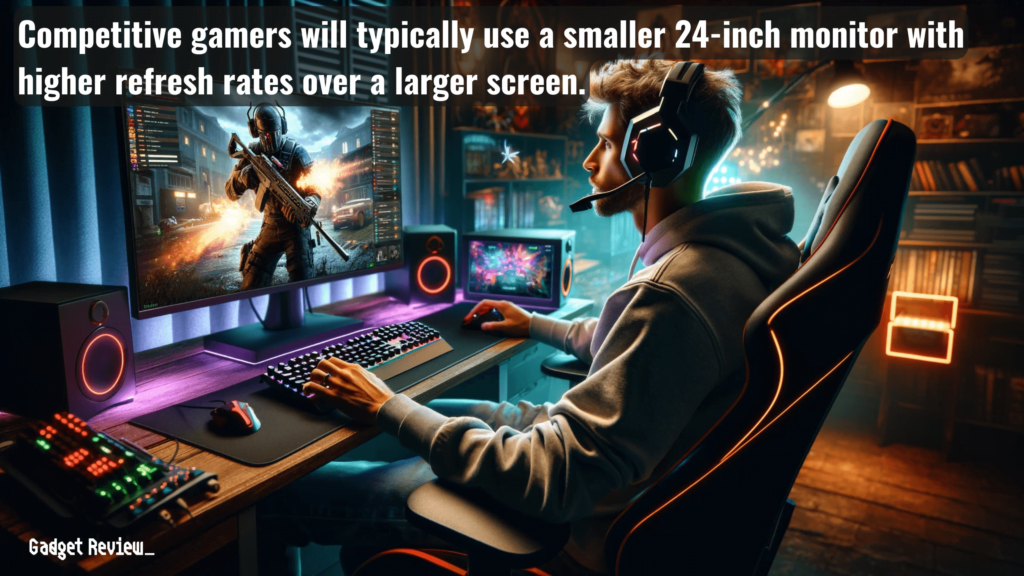
If you are an avid and competitive gamer, you will find that 24-inch monitors are the standard size option in many professional gaming competitions.
This holds particularly true for first-person shooters since a 24-inch screen can make your gaming more efficient by helping your eyes take less time to take in what’s happening on the entire screen versus a larger 27-inch monitor size.
STAT: 24-inch monitors are among the most common size for a display. This means that there are many options to choose from when compared to larger displays. (source)
However, for a more casual gamer who plays less demanding games or those who prioritize a more visually stunning experience, larger screen sizes like 27-inch models and other larger displays will still make your gaming feel more immersive.
When considering a new display, you should also compare LCD vs LED monitor gaming, it’s important to note that LED monitors generally offer better contrast and colors, enhancing the gaming experience on both 24-inch and 27-inch screens.
Space
If you are short on space, go for a 24-inch display, as it will not take up too much room on the desk or wherever else you put it. The same cannot be said for 27-inch displays, so take that into consideration.
Ultimately, choosing between a 24-inch or 27-inch monitor depends on your specific needs, whether it’s for gaming, streaming, or professional work.
Desktop monitors in these sizes cater to a variety of preferences, making it essential to consider factors like resolution, screen technology, and personal space constraints.

